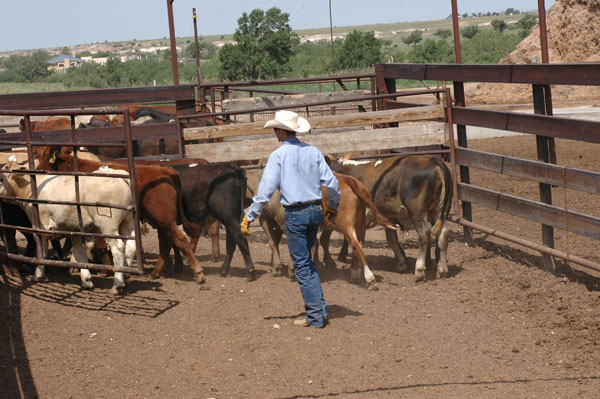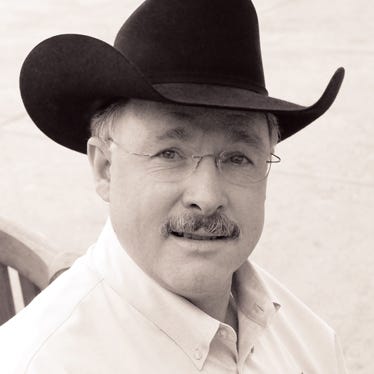Stocker demand underpins calf prices
Cattle prices were mostly steady this week as auction volume increases seasonally.
October 6, 2018

Cattle markets trudged mostly sideways this week, helped along by early-week news that Canada will join the U.S. and Mexico in a new North American trade agreement (see “More trade dominos fall”).
Feeder cattle traded firm to $2 per cwt higher, according to the Agricultural Marketing Service (AMS). Calves sold unevenly steady with buyers discounting un-weaned and short-weaned types in some areas.
Week to week on Friday, other than narrowly mixed across the front half of the board, Feeder Cattle futures closed an average of 96centshigher (40centsto $1.50 higher).
The CME Feeder Cattle Index was at the highest level since last November on Thursday at $158.18.
“Numerous factors will affect the likelihood of a seasonal stocker calf price low in the next month,” says Derrell Peel, Extension livestock marketing specialist at Oklahoma State University, in his weekly market comments. “Supplies will grow as feeder volumes increase to a seasonal peak by early to mid-November. With the larger 2018 calf crop, the fall run of calves is expected to exceed last year. However, demand for wheat pasture stockers may partially or totally offset increased stocker calf supplies (see “Wheat pasture prospects….)
“I really don’t expect much more increase in stocker prices but additional increases are possible in the next couple of weeks. As we move through October into November, feeder prices are likely to stabilize or perhaps move lower but the seasonal low may be quite muted. Recent purchase price increases have reduced the return potential for winter stockers, meaning that producers should carefully budget winter stockers to guide upcoming purchases. For cow-calf producers, recent calf price increases have added upwards of $50 per head to calf value in the past six weeks or so.”
Fed cattle prices hover
Negotiated cash fed cattle trade was mainly steady through late Friday afternoon at $110-$112 per cwt on a live basis and at $174-$175 in the beef. Trade remained undeveloped in the Southern Plains.
Live Cattle futures closed narrowly mixed, from an average of 32cents lower toward the front of the board to an average of 24 cents higher.
“Packers continue to work in the black as slaughter rates remained aggressive and finished the week at 643,000 head,” say AMS analysts.
Wholesale beef values continued seasonally lower. Week to week, Choice boxed beef cutout value was 63centslower Friday afternoon at $203.25 per cwt. Select was $1.70 lower at $191.74.
“Wholesale beef prices seasonally come under pressure in late September and October as consumers move away from summer routines,” explains Andrew P. Griffith, agricultural economist at the University of Tennessee, in his weekly market comments. “How prices move is dependent on supply and demand. Demand for beef has been strong domestically and internationally. Similarly, supply of beef and other meats has been increasing the past few years, and it is expected to continue increasing.”
For perspective, based on USDA data, Griffith says per capita consumption of red meat and poultry in the U.S. last year was 215 pounds, which was the most since 2007. He says it’s projected to be about 220 pounds for the next two years, similar to the total for 2002-2007.
Choice price support
David Anderson, Extension livestock economist at Texas A&M University, points out a relative year-over-year decline in Choice-grading beef is helping to keep Choice wholesale beef values higher than last year.
“Choice beef production over the last four weeks is about 3.2% below a year ago,” says Anderson in the latest issue of In the Cattle Markets. “The effect of fewer carcasses grading Choice is compounded by fewer steers and relatively more heifers in the slaughter mix. Fed steer weights are about the same as a year ago, while heifers are reflecting heavier weights. This lack of Choice beef is showing up in prices with the Choice cutout at about $204 per cwt compared to about $192 a year ago.”
Keep in mind, the trend over time continues to be significantly more carcasses grading Choice and Prime.
Of the beef carcasses graded in September of 1997, Anderson explains 2% graded Prime and 51% graded Choice, while 37% graded Select. Through the first three weeks of September this year, 7.8-7.9% graded Prime, 70.0-70.1% graded Choice (30-30.2% upper two-thirds of Choice) and 17.6-18% graded Select. That’s according to the weekly USDA National Steer and Heifer Estimated Grading Percent reports.
About the Author(s)
You May Also Like




.png?width=300&auto=webp&quality=80&disable=upscale)
